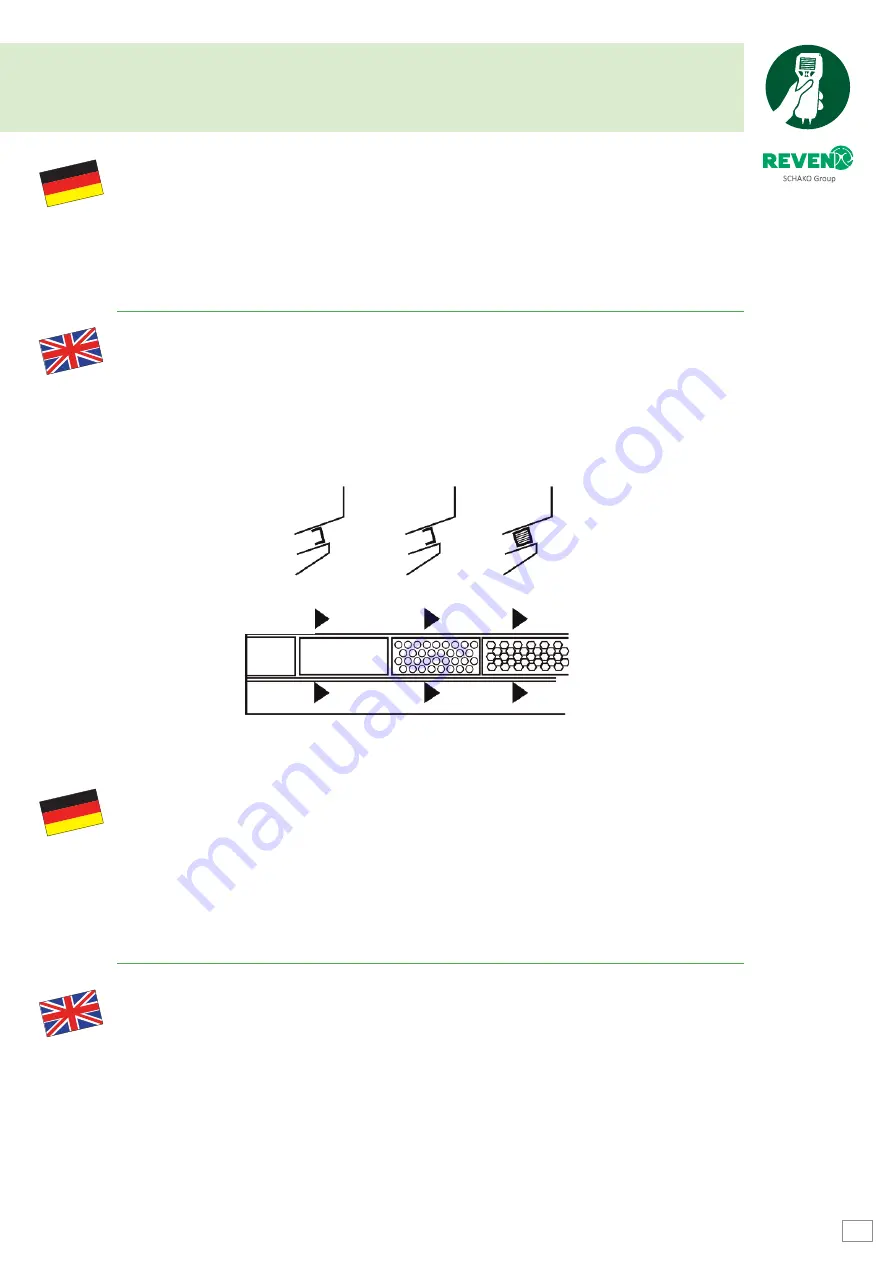
Einregulierung VI /
Typ EVN, EVN-R, EJET®, EGJ und DVN Serie
Adjustment VI /
Type EVN EVN, EVN-R, EJET®, EGJ and DVN series
Arbeiten die Haube und die Lüftung grundsätzlich ordnungsgemäß,
aber untemperierte Luft strömt an einzelnen Stellen nach unten,
➜
können Blockierstücke (U-Profil, Lochblech-U, Kunststoffgleichrichterwaben usw.)
in der Zuluftdüse angebracht werden. Das geeignete Profil und die erforderliche
Menge müssen durch Versuche ermittelt werden.
If the hood basically functions well but untempered air flows downwards at individual points,
➜
you can fit blocking devices (U-sections, perforated sections, rectifying
honeycombs, etc.) in the supply air nozzle as a remedy. Determine the
suitable profile via trial and error.
Typische Längen für die Blockierstücke liegen zwischen 60 mm und 250 mm. Die Länge und optimale
Platzierung in der Düse kann durch Unterlegen, z. B. eines Stück Pappkartons, beeinflusst werden.
➜
Die Stelle markieren, das Blockierstück einsetzen, mit Silikon verkitten und Größe und Position
im Einregulierprotokoll vermerken.
Sind die Regulierklappen fast geschlossen, weil die Ventilator-
leistung zu groß ist,
➜
muss die Ventilatordrehzahl herabgesetzt oder die Zuluftmenge im Kanalsystem
gedrosselt werden,
da die Regulierklappen der Hauben nur zur Feineinstellung vorgesehen sind.
The typical lengths of blocking devices are between 60 mm and 250 mm. If required, use a piece
of cardboard to improve the position of the blocking device in the nozzle or to extend its length.
➜
Mark the point, insert the blocking device, seal with silicone and note the size and position in
the adjustment report.
If the control dampers are almost shut because the fan power is too high,
➜
reduce the fan speed or the air-flow rate in the duct system.
The control dampers in the hoods
should only be used for fine adjustment.
Abb.: Einbau von Blockierstücken in Zuluftdüse
Fig.: installation of blocking devices in the supply air nozzle
Querschnitt
Cross section
113
















































